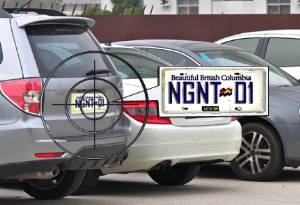
By Jay Jason Bartlett, CEO of Cozaint Corp
Automatic Number Plate Recognition (ANPR), also known as License Plate Recognition (LPR), is becoming a vital component of contemporary business security and productivity. Through the acquisition and examination of license plate data, companies can greatly improve their operations.
Regarding security, LPR systems serve as watchful defenders. They are able to recognize unauthorized cars, so when an unknown car pulls onto the property, they can instantly sound the alarm. Real-time vehicle theft detection is made possible by integration with law enforcement databases, safeguarding property and discouraging criminal activity.
When an incident occurs, LPR film helps identify suspects or involved vehicles and is a vital piece of evidence for investigations. LPR is perfect for high-security institutions since it may be connected with access control systems to give or prohibit entry based on vehicle authorization.
LPR improves operational efficiency in addition to security. By automating entry and exit, easing traffic, and upholding parking laws, it transforms parking management. LPR tracks the movement of cars and trailers for companies in the logistics and transportation industries, improving fleet management and inventory control.
The ease with which LPR-enabled parking simplifies the entrance and departure procedures is another advantage to customers. Businesses can use the data gathered by LPR systems to make data-driven decisions on resource allocation and operational optimization. This data also provides insightful information about usage trends.
Real-World Illustrations
There are a wide range of applications for LPR. Think about these instances:
• Retail: Using LPR, a mall may track parking occupancy, detect VIP patrons, and examine patron behavior.
• Hospitality: For security, valet parking, and visitor check-in, hotels and resorts can use LPR.
• Logistics: By tracking goods, streamlining routes, and expediting delivery times, logistics and transportation organizations can employ LPR.
• Government: For border security, traffic enforcement, and crime prevention, law enforcement agencies use LPR.
Even though LPR has a lot of potential, issues like data privacy and image quality must be addressed. To protect sensitive data, strong data protection procedures must be followed. The accuracy of license plate identification can also be impacted by variables like weather and camera angle.
Notwithstanding these obstacles, LPR is a priceless tool for companies looking to increase efficiency and security because the advantages exceed the disadvantages by a wide margin. We should expect even more inventive uses of LPR in the future as technology develops further.

